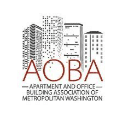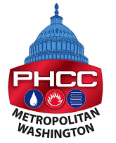
Over the past six months school HVAC systems have become a source of consternation and concern for parents, teachers and administrators across the country.
What isn't generally debated was the pre-pandemic inadequacy of the ventilation systems in many schools. Hundreds of millions of people likely went to school in poorly ventilated classrooms. Many outdated systems have been years overdue for replacement.
Education resources are finite, and many schools and districts had other priorities before the pandemic. It's only become an issue now because of the virulent nature of the coronavirus.
Part of the emergency $2.3 trillion legislation that was passed in December 2020 was specifically aimed at this school reopening hurdle. About $54.3 billion was intended to go towards improving ventilation systems and indoor air quality in the nation's schools.
However, not every school district has been sitting on their hands for the past year. The American Society of Heating, Refrigerating and Air-Conditioning Engineers (ASHRAE) released guidance on making school HVAC systems safe for reopening back in July 2020. Many states and districts, at least those with the funding and administrative will to do so, took advantage of school closures to remedy outdated systems with substandard ventilation.
The CDC has their own big list of school ventilation of recommendations.
Their suggestions are broken into three categories:
- Increase outdoor air and minimize recirculation
- Adjust HVAC settings to maximize ventilation
- Improve your filtration and indoor air quality (IAQ) equipment
Many of these recommendations can be applied in your own home as well to help reduce COVID-19 risk.
INCREASING OUTSIDE AIRFLOW
Opening doors and windows when the weather permits may seem obvious enough that it doesn't need to be listed, but sometimes people forget how effective natural ventilation can be.
If you have an open window with a screen you can also set a fan on the window's sill to push the inside air out. This method of basic mechanical ventilation works best in rooms with multiple exterior windows. Using one window with a fan to act as exhaust allows the unobstructed window to pull air inside at an accelerated rate.
The CDC also recommends having classes, activities, recess and lunches outside when the weather permits.
MODIFYING YOUR HVAC SYSTEM'S SETTINGS
Every business and home should have their HVAC system serviced at least annually. The CDC recommends each schools' HVAC system meets the ASHRAE's standards for indoor air quality based on building space and occupancy.
Concerned parents and educators can learn more from the EPA's robust reference guide for monitoring and maximizing indoor air quality in schools. You can also find Washington D.C.'s indoor environmental air quality and comfort regulations and codes here.
Some HVAC settings that can improve indoor ventilation include:
- Reduce recirculation
- Increase airflow supply in spaces with high occupancy
- Turn off demand-controlled ventilation (DCV) settings that adjusts the air supply based on a space's temperature
- Turn the fan from auto to on so it runs continually
- If weather doesn't permit maximum outside airflow during the day, at least run it two hours before and after school to flush out the indoor air
AIR FILTRATION SOLUTIONS
Air filters and various IAQ systems are important in every building, whether it's your home, workplace or a school.
Finding a HVAC filter with the optimal Minimum Efficiency Reporting Value (MERV) rating is often a balancing act between IAQ, system performance and airflow maximization. Using a filter that's too dense can reduce airflow and put additional strain on some HVAC systems.
The CDC also recommends schools, especially if they have poor airflow or low-grade air filters, invest in portable HEPA filters that can be placed in classrooms or high-risk areas.
They also recommend installing ultraviolet germicidal irradiation (UVGI) in ductwork, particularly in schools or childcare facilities that may be limited on airflow or air filtration quality.
If you're interested in getting a UVGI system for your home, call Vito Services. We install these systems in D.C.-area homes frequently. Working with a professional who knows how to install UVGI systems safely is important, as even minimal exposure to the light can have serious negative health effects.
MAKE SURE YOUR FAMILY ALWAYS HAS CLEAN AIR
If your kids are heading back to school or have already gone back, you may want to ask someone in administration about the IAQ solutions they are implementing. Parents who want to make sure their family is breathing the cleanest air possible at home should give Vito Services a call at 301-315-6100 .
We design and install a wide range of indoor air quality solutions, including UV light, HEPA filter systems, polarized media filters and much more. Schedule an appointment to get started today.








